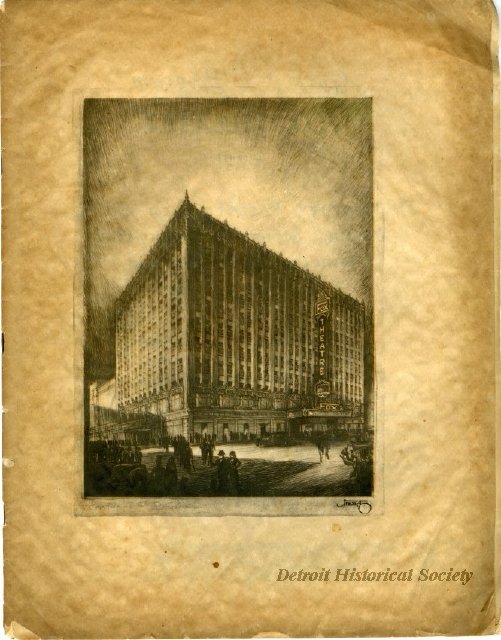Architect Charles Howard Crane was born in 1885 in Hartford, Connecticut. He was one of the least well-educated architects of his era, having dropped out of high school after two years with no further formal education or training. He arrived in Detroit in 1904 and a year later bluffed his way into a job as a draftsman at the architectural firm of Albert Kahn and later for the firm of Smith, Hinchman, and Grylls. By late 1908, Crane had opened his own firm. Crane specialized in theater design, though he also designed numerous office buildings such as the LeVeque Tower in Columbus, Ohio which was the fifth tallest building in the world when it opened in 1927. His unique skill, which he called “building by instinct,” was in such demand for an extended period that he designed more than 50 theaters in Metro Detroit and 250 other theaters nationwide.
Crane’s first commission was the Majestic Theater, a storefront converted into a nickelodeon. The first large theater he designed was the Columbia Theater. With over 1,000 seats, it was the first in Detroit to use an orchestra for accompaniment, and the first to have a pipe organ. Several of Crane’s earliest theaters are still standing, including the Fine Arts, Garden and Majestic, all of which are located on Woodward Avenue in Detroit. Crane designed several theaters around Grand Circus Park, including the Adams, Madison, State, United Artists, and the Fox Theater, which opened in 1928. William Fox, founder of 20th Century Fox Film Corporation, commissioned Crane to design flagship Fox theaters in Brooklyn in 1927 and in St. Louis in 1929, as well as Detroit. When legendary actors Mary Pickford, Douglas Fairbanks and Charlie Chaplin formed United Artists’ Studios in the mid-1920s, they called upon Crane to design their flagship movie palace in downtown Los Angeles which he adapted for both Detroit and Chicago. He also designed Detroit’s Orchestra Hall and the Detroit Opera House, as well as Olympia Stadium, which was home to both the Detroit Red Wings and the Detroit Pistons until 1980.
With the onset of the Great Depression in 1929, Crane no longer received commissions. He left Detroit and moved to London where he continued to design many small theaters across Britain, though none were on such a grand scale as those in the United States. Crane maintained offices in Detroit for several years and returned once or twice a year until the onset of World War II. He died in London in 1952.
